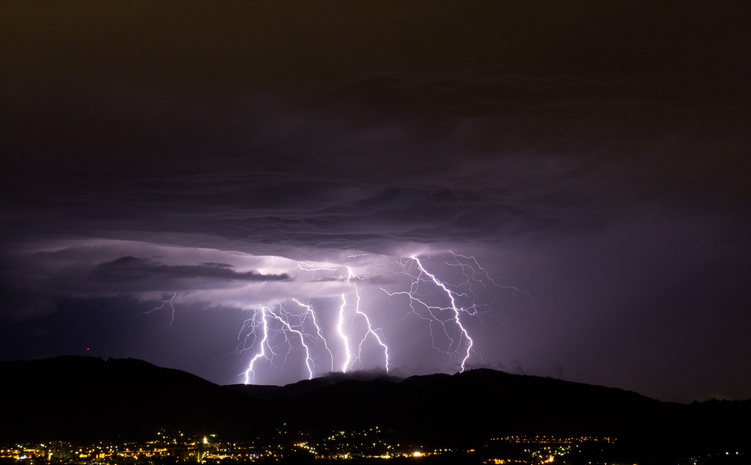
If you’ve ever wondered what would happen during a power surge, you’re not alone. Power surges are common, but there are things you can do to decrease the likelihood of a surge happening in your building or lessen the chance of damage if one were to happen.
At Hawkeye Electric, we strive to arm our customers with the tools and knowledge they need to protect their building and tenants from a potential surge. Because the last thing you need is an electrical fire.
What Is a Power Surge?
A surge happens when there is an overwhelming surge of electricity that travels through the wires into a device. These types of surges can be small or large and can cause damage to electrical equipment, disrupt operations and even result in fires.
Surges can be caused by faulty wiring and even lightning strikes. It’s also common to experience a surge during a power outage—when power is restored after an outage, there’s a high risk of a surge in electricity.
How to Protect Against A Power Surge
As a business owner, it’s important to make sure that your commercial building is properly equipped to protect against power surges. One of the most effective ways to protect your building from power surges is to install surge protection devices (SPDs) on your electrical system.
SPDs are designed to divert excess electrical energy away from your equipment and into the ground, where it can be safely dissipated. SPDs add an extra layer of protection against surges, which can give you peace of mind knowing your building is better protected from electrical threats.
There are several types of SPDs available, each with its own unique set of features and benefits. Some common types of SPDs include:
- Whole Building Surge Protection. This type of SPD is designed to protect the entire electrical system of a building, including the main service entrance, subpanels, and individual circuits. It’s typically installed at the main service entrance and can provide protection for all electrical equipment in the building.
- Point-of-Use Surge Protection. This type of SPD is designed to protect specific electrical equipment or circuits. It’s typically installed at the point where the equipment is connected to the electrical system, such as at an outlet or on a circuit breaker.
- Network and Data Line Surge Protection. This type of SPD is designed to protect electronic equipment that is connected to a network or data line. It’s typically installed at the point where the network or data line enters the building.
When choosing a surge protection device, it’s important to consider the level of protection that you need, as well as the type of equipment that you’re trying to protect. For example, if you have sensitive electronic equipment that’s critical to your operations, you may want to consider a SPD with a higher level of protection. This will ensure that your business operations aren’t shut down in the event of a surge.
In addition to installing SPDs, there are several other steps you can take to protect your commercial building from power surges. These include:
- Unplugging equipment during a storm. This can help prevent damage from power surges caused by lightning strikes.
- Trimming trees near power lines. This is an easy way to help reduce the risk of power surges caused by fallen tree branches.
- Installing a generator. In the case of surge prevention, a generator can provide backup power during a power outage, which will lessen the likelihood of damage caused by voltage fluctuations.
By taking these steps, you can help to ensure that your commercial building is safely equipped to protect against power surges.
Hawkeye Electric has grown to become one of the top electrical contractors in Arizona and we’re known for our dependability, performance and affordable pricing. If you have any questions about surge protection or need help choosing the right SPD for your building, don’t hesitate to contact us at Hawkeye Electric today!

